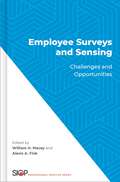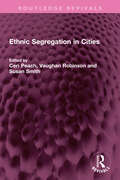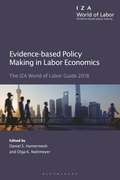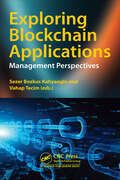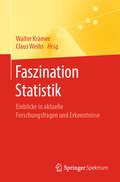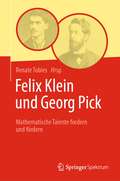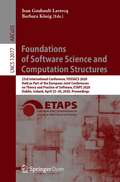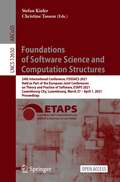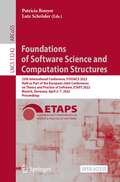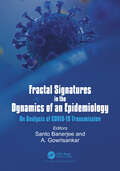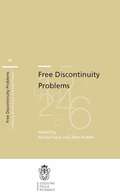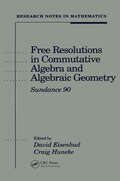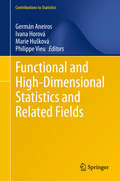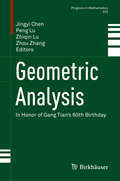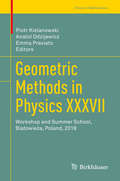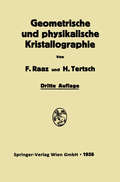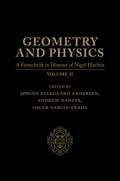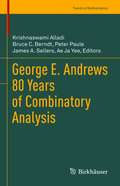- Table View
- List View
Employee Surveys and Sensing: Challenges and Opportunities (The Society for Industrial and Organizational Psychology Professional Practice Series)
Professional practice in the design and execution of employee survey programs has evolved tremendously over the past decade. Advances in technology and enthusiastic new interest in talent analytics have combined to create an exciting space with a good deal of innovation along methodological lines, matched by renewed interest in the strategic role of surveys and sensing for improving organizational effectiveness. Providing solid grounding in the basic issues of content development, interpreting results, and driving action, this book also addresses cutting-edge topics in the area of survey analytics (including applications of computational linguistics and artificial intelligence). Significant emphasis is given to ethical issues which are particularly salient given the zeitgeist for ensuring the protection of data and the privacy of survey respondents. The book is appropriate for use in advanced graduate level courses in survey research and will be a valuable shelf resource for survey practitioners whether trained formally in I-O psychology or other areas of organizational science.
Enlargement
This diagram shows two triangles; the original triangle and its enlargement into a new position. A locator dot and title are shown. These must always be at the top left of the page when the image is the right way up. There is a graph with the x-axis ranging from 0 to 5 at the bottom of the page. The y-axis ranging from 0 to 6 is to the left. Every other axis division mark is labelled. Some of the braille uses maths code notation. The original triangle is in the centre of the diagram. The enlarged triangle is towards the bottom right. The heavy dotted lines indicate the tracking of the enlargement. A1B1 = 2 x AB therefore the scale factor is 2.
Enlargement
This diagram shows two triangles; the original triangle and its enlargement into a new position. A locator dot and title are shown. These must always be at the top left of the page when the image is the right way up. There is a graph with the x-axis ranging from 0 to 5 at the bottom of the page. The y-axis ranging from 0 to 6 is to the left. Every other axis division mark is labelled. Some of the braille uses maths code notation. The original triangle is in the centre of the diagram. The enlarged triangle is towards the bottom right. The heavy dotted lines indicate the tracking of the enlargement. A1B1 = 2 x AB therefore the scale factor is 2.
Enlargement
This diagram shows two triangles; the original triangle and its enlargement into a new position. A locator dot and title are shown. These must always be at the top left of the page when the image is the right way up. There is a graph with the x-axis ranging from 0 to 5 at the bottom of the page. The y-axis ranging from 0 to 6 is to the left. Every other axis division mark is labelled. Some of the braille uses maths code notation. The original triangle is in the centre of the diagram. The enlarged triangle is towards the bottom right. The heavy dotted lines indicate the tracking of the enlargement. A1B1 = 2 x AB therefore the scale factor is 2.
Entschleunigung: Die Entdeckung der Langsamkeit GLOBArt Academy 2008 (GLOBArt)
Die GLOBArt Academy 2008 befasste sich mit dem Thema „Entschleu- gung – die Entdeckung der Langsamkeit“. Das Kloster Pernegg – als Ort der Stille, der inneren Einkehr und der Kraft – erscheint ganz besonders geeignet, ein derartiges Thema im Kreis von Menschen aus vielfältigen - rufs- und Bildungsgruppen zu erarbeiten. In einer Zeit der exzessiven - tonung des Materiellen, rasanter (Fehl-)entwicklungen der Finanzmärkte und unübersehbar negativer Entwicklungen auf den Realmärkten und im Arbeitsmarkt verlieren wir alle leicht die Orientierung hin zu jenen W- ten und Lebensgrundlagen die das wirklich wesentliche Thema des Lebens ausmachen und die man nur mit innerer Gelassenheit zu entdecken v- mag. Werte, die also auch außerhalb des ?üchtigen Zeitbegriffes stehen: Tempus Fugit Gottes Mühlen mahlen langsam Die Zeit rettet die Wahrheit In zahlreichen Spruchweisheiten wird unser Generalthema in vielen K- turen in Gegenwart und Vergangenheit beschrieben. Jede Befassung mit dem Zeitbegriff ist eine Befassung mit der eigenen Endlichkeit und der uns unbegrei?ichen Unendlichkeit. Tempo und Langsamkeit, Beschleunigung und Entschleunigung sind T- men dieser irdischen begrenzten Zeitlichkeit. Es geht um die Auseinand- setzung mit tausenden auf uns einstürmenden Informationen und daraus permanent umgestürzten Prioritäten unseres täglichen Handelns und Ag- rens. Ein von Zwängen bestimmtes – in enge zeitliche Korsette gezwängtes passives Nebeneinander an Stelle eines aktiven Miteinanders. Konzentr- ren auf wirklich Wesentliches, das in der uns zur Verfügung stehenden Zeit positiv bewältigt und erlebt werden kann.
Ethnic Segregation in Cities (Routledge Revivals)
First published in 1981, Ethnic Segregation in Cities argues that race and ethnicity are fundamental to writing about the city, and that economic patterns adapt themselves to race and ethnicity rather than vice versa. The problem of ethnic segregation is a burning one for both geographers and sociologists – geographers because of the concern for all aspects of urban deprivation, and sociologists because they are discovering that space and spatial processes are important factors in influencing social segregation or assimilation. The book brings together some of the main contributors to the literature on spatial aspects of ethnicity from both sides of the Atlantic. A variety of evidence from New York, Detroit, Bradford and Blackburn address the question of whether choice on the path of ethnic members, or constraints imposed by the host society are determinant factors influencing residential segregation. This book will be of interest to students of sociology, human geography and urban studies.
Evidence-based Policy Making in Labor Economics: The IZA World of Labor Guide 2018
IZA World of Labor provides a reliable and concise guide to the best thinking and research on labor economics for decision makers, advisors, and interested citizens concerned with labor market issues worldwide.Written by well-known labor economists, this volume presents research findings on key policy issues in a compact and readable format, as distillations of comprehensive evidence-based research with concise policy recommendations. Designed to act as a quick reference, this guide brings together summaries of over 100 articles published on the IZA World of Labor website to give busy policy advisors, journalists, researchers, policymakers and concerned citizens in every country around the world instant access to authoritative guidance on key policy topics. These include summaries of the current state of specific country labor markets; the effects of climate change; part-time employment; multiple job-holding; motherhood wage penalty; big data; and labor market outcomes of trans people.
Exploring Blockchain Applications: Management Perspectives
In this book, the development process of blockchain algorithms and examples of their applications in different sectors are explored. The opportunities and challenges of blockchain implementations that arise in making technological innovations usable in corporate structures are discussed. In this respect, the book aims to deal with both the conceptual framework and the real challenges and opportunities encountered in practice regarding the blockchain applications. It is tried to contribute to the literature by presenting practical blockchain application suggestions to the readers on a scientific basis.It is a fact that blockchain technology is considered one of the most disruptive and revolutionary innovations after the invention of the internet. Blockchain technology, which was first used for cross-border payments, is coming up with a new application area in a different sector every day. The main purpose of Blockchain-based systems is to spread the "trust" service provided by a central intermediary to machines in transactions between two parties. Thus, it removes the need for this trust from the monopoly of a single intermediary. Blockchain implementation scenarios are to establish math-based trust in an untrusted environment.While exploring the complexity of blockchain applications in different sectors, the emerging risks are also examined from a management perspective. In particular, it is aimed to be a key work that the management levels of the enterprises can benefit from in the decision-making processes.It will be seen that blockchain technologies will be used unlimitedly in design, planning, management and decision making. This book will also introduce new visions for practitioners to use different blockchain technologies and methodologies to face problems.
Faszination Statistik: Einblicke in aktuelle Forschungsfragen und Erkenntnisse
Dieser Sammelband zeigt an ausgewählten Beispielen, wie spannend und vielfältig statistische Forschung sein kann. Ob es nun darum geht, hörgeschädigten Menschen einen guten Musikgenuss zu verschaffen, aus Texten sinnvolle quantitative Daten zu extrahieren oder Überschwemmungskatastrophen zu modellieren und damit besser in den Griff zu bekommen – die meisten in diesem Buch dargestellten Erkenntnisse sind nicht in Lehrbüchern zu finden, sie stammen direkt von der Forschungsfront und laden zum Staunen und Entdecken ein. Auf Fachjargon und Formalismus wird bei der Darstellung so weit wie möglich verzichtet – das Buch richtet sich somit an jeden, der sich für das aktuelle Forschungsgeschehen im Bereich statistischer Anwendungen interessiert. Es ermöglicht einen unverdeckten Blick auf eine durch und durch faszinierende Wissenschaft – ohne dass die einzelnen Analysen bis ins Detail nachvollzogen werden müssen. Studierenden kann das Buch helfen, Begeisterung für statistische Fragestellungen und Methoden zu entwickeln, oder sogar Anregungen für die eigene Laufbahn geben. Ein Großteil der Beiträge entstand an der Fakultät Statistik der TU Dortmund, der einzigen eigenständigen Statistik-Fakultät im ganzen deutschen Sprachgebiet, sowie darüber hinaus im Rahmen von an diese Fakultät angedockten DFG-Sonderforschungsbereichen.
Felix Klein und Georg Pick: Mathematische Talente fordern und fördern
Das Buch enthält die Vorträge, die der aus jüdischem Elternhaus in Wien stammende Mathematiker Georg Pick in Felix Kleins Forschungsseminaren in Leipzig (1883/84 und 1884 ) hielt, sowie die Briefe und Karten, die Pick von 1884 bis 1898 an Klein schrieb. Diese Dokumente werden kommentiert und mit einer ausführlichen Einleitung versehen. Es wird erhellt, wie Klein mathematische Talente erkannte, forderte und förderte. Die Quellen beleuchten den von Klein ausgeübten kooperativen Stil mathematischen Arbeitens, der sich damals gerade erst herausbildete und an manchen Orten noch verpönt war. Die Vorträge und Briefe dokumentieren Georg Picks kreative mathematische Ideen, bieten neue Einsichten zur frühen Geschichte der elliptischen Modulfunktionen und verwandter Gebiete. Außerdem wird deutlich, mit welchem Engagement Klein die Karriere Georg Picks förderte - in einer Zeit des weit verbreiteten Antisemitismus. Das Buch ist nützlich für Lehrende und Forschende in Mathematik, Mathematikunterricht und Wissenschaftsgeschichte.
Foundations of Software Science and Computation Structures: 23rd International Conference, FOSSACS 2020, Held as Part of the European Joint Conferences on Theory and Practice of Software, ETAPS 2020, Dublin, Ireland, April 25–30, 2020, Proceedings (Lecture Notes in Computer Science #12077)
This open access book constitutes the proceedings of the 23rd International Conference on Foundations of Software Science and Computational Structures, FOSSACS 2020, which took place in Dublin, Ireland, in April 2020, and was held as Part of the European Joint Conferences on Theory and Practice of Software, ETAPS 2020.The 31 regular papers presented in this volume were carefully reviewed and selected from 98 submissions.The papers cover topics such as categorical models and logics; language theory, automata, and games; modal, spatial, and temporal logics; type theory and proof theory; concurrency theory and process calculi; rewriting theory; semantics of programming languages; program analysis, correctness, transformation, and verification; logics of programming; software specification and refinement; models of concurrent, reactive, stochastic, distributed, hybrid, and mobile systems; emerging models of computation; logical aspects of computational complexity; models of software security; and logical foundations of data bases.
Foundations of Software Science and Computation Structures: 24th International Conference, FOSSACS 2021, Held as Part of the European Joint Conferences on Theory and Practice of Software, ETAPS 2021, Luxembourg City, Luxembourg, March 27 – April 1, 2021, Proceedings (Lecture Notes in Computer Science #12650)
This open access book constitutes the proceedings of the 24th International Conference on Foundations of Software Science and Computational Structures, FOSSACS 2021, which was held during March 27 until April 1, 2021, as part of the European Joint Conferences on Theory and Practice of Software, ETAPS 2021. The conference was planned to take place in Luxembourg and changed to an online format due to the COVID-19 pandemic. The 28 regular papers presented in this volume were carefully reviewed and selected from 88 submissions. They deal with research on theories and methods to support the analysis, integration, synthesis, transformation, and verification of programs and software systems.
Foundations of Software Science and Computation Structures: 25th International Conference, FOSSACS 2022, Held as Part of the European Joint Conferences on Theory and Practice of Software, ETAPS 2022, Munich, Germany, April 2–7, 2022, Proceedings (Lecture Notes in Computer Science #13242)
This open access book constitutes the proceedings of the 25th International Conference on Foundations of Software Science and Computational Structures, FOSSACS 2022, which was held during April 4-6, 2022, in Munich, Germany, as part of the European Joint Conferences on Theory and Practice of Software, ETAPS 2022. The 23 regular papers presented in this volume were carefully reviewed and selected from 77 submissions. They deal with research on theories and methods to support the analysis, integration, synthesis, transformation, and verification of programs and software systems.
Fractal Signatures in the Dynamics of an Epidemiology: An Analysis of COVID-19 Transmission
The recent Covid-19 pandemic threw the world into complete chaos with its rapid and devastating spread. Scientists are still trying to obtain a better understanding of the patterns of COVID-19 and trying to get a deeper understanding of mutant strains and their pathogenicity by performing genomic sequences of more samples. Fractal-based analysis provides its unique forecasting policy to reduce the spread of COVID-19, and in general, of any outbreaks. The book presents fractal and multifractal models of COVID-19 and reviews the impact of the pandemic including epidemiology, genome organization, transmission cycle, and control strategies based on mathematical models towards developing an immune intervention. Also, it covers non-clinical aspects such as economic development with graphical illustrations, meeting the needs of onlookers outside the sector who desire additional information on the epidemic. The fractal signatures describe the fractal textures in the patterns of Corona virus. Studies on the epidemiology of Covid-19 in relation with the fractals and fractal functions serve to exhibit its irregular chaotic nature. Moreover, the book with its wide coverage on the Hurst exponent analysis and the fractal dimension estimation, greatly aids in measuring the epidemiology.
Free Discontinuity Problems (Publications of the Scuola Normale Superiore #19)
This book presents a series of lectures on three of the best known examples of free discontinuity problems: the Mumford-Shah model for image segmentation, a variational model for the epitaxial growth of thin films, and the sharp interface limit of the Ohta-Kawasaki model for pattern formation in dyblock copolymers.
Free Resolutions in Commutative Algebra and Algebraic Geometry
The selected contributions in this volume originated at the Sundance conference, which was devoted to discussions of current work in the area of free resolutions. The papers include new research, not otherwise published, and expositions that develop current problems likely to influence future developments in the field.
Functional and High-Dimensional Statistics and Related Fields (Contributions to Statistics)
This book presents the latest research on the statistical analysis of functional, high-dimensional and other complex data, addressing methodological and computational aspects, as well as real-world applications. It covers topics like classification, confidence bands, density estimation, depth, diagnostic tests, dimension reduction, estimation on manifolds, high- and infinite-dimensional statistics, inference on functional data, networks, operatorial statistics, prediction, regression, robustness, sequential learning, small-ball probability, smoothing, spatial data, testing, and topological object data analysis, and includes applications in automobile engineering, criminology, drawing recognition, economics, environmetrics, medicine, mobile phone data, spectrometrics and urban environments. The book gathers selected, refereed contributions presented at the Fifth International Workshop on Functional and Operatorial Statistics (IWFOS) in Brno, Czech Republic. The workshop was originally to be held on June 24-26, 2020, but had to be postponed as a consequence of the COVID-19 pandemic. Initiated by the Working Group on Functional and Operatorial Statistics at the University of Toulouse in 2008, the IWFOS workshops provide a forum to discuss the latest trends and advances in functional statistics and related fields, and foster the exchange of ideas and international collaboration in the field.
Geometric Analysis: In Honor of Gang Tian's 60th Birthday (Progress in Mathematics #333)
This edited volume has a two-fold purpose. First, comprehensive survey articles provide a way for beginners to ease into the corresponding sub-fields. These are then supplemented by original works that give the more advanced readers a glimpse of the current research in geometric analysis and related PDEs.The book is of significant interest for researchers, including advanced Ph.D. students, working in geometric analysis. Readers who have a secondary interest in geometric analysis will benefit from the survey articles.The results included in this book will stimulate further advances in the subjects: geometric analysis, including complex differential geometry, symplectic geometry, PDEs with a geometric origin, and geometry related to topology.Contributions by Claudio Arezzo, Alberto Della Vedova, Werner Ballmann, Henrik Matthiesen, Panagiotis Polymerakis, Sun-Yung A. Chang, Zheng-Chao Han, Paul Yang, Tobias Holck Colding, William P. Minicozzi II, Panagiotis Dimakis, Richard Melrose, Akito Futaki, Hajime Ono, Jiyuan Han, Jeff A. Viaclovsky, Bruce Kleiner, John Lott, Sławomir Kołodziej, Ngoc Cuong Nguyen, Chi Li, Yuchen Liu, Chenyang Xu, YanYan Li, Luc Nguyen, Bo Wang, Shiguang Ma, Jie Qing, Xiaonan Ma, Sean Timothy Paul, Kyriakos Sergiou, Tristan Rivière, Yanir A. Rubinstein, Natasa Sesum, Jian Song, Jeffrey Streets, Neil S. Trudinger, Yu Yuan, Weiping Zhang, Xiaohua Zhu and Aleksey Zinger.
Geometric Methods in Physics XXXVII: Workshop and Summer School, Białowieża, Poland, 2018 (Trends in Mathematics)
The book consists of articles based on the XXXVII Białowieża Workshop on Geometric Methods in Physics, 2018. The series of Białowieża workshops, attended by a community of experts at the crossroads of mathematics and physics, is a major annual event in the field. This edition of the workshop featured a special session dedicated to Professor Daniel Sternheimer on the occasion of his 80th birthday. The previously unpublished papers present cutting-edge current research, typically grounded in geometry and analysis, with applications to classical and quantum physics. For the past seven years, the Białowieża Workshops have been complemented by a School on Geometry and Physics comprising a series of advanced lectures for graduate students and early-career researchers. The book also includes abstracts of the five lecture series that were given at the seventh school.
Geometry and Physics: A Festschrift in honour of Nigel Hitchin
Nigel Hitchin is one of the world's foremost figures in the fields of differential and algebraic geometry and their relations with mathematical physics, and he has been Savilian Professor of Geometry at Oxford since 1997. Geometry and Physics: A Festschrift in honour of Nigel Hitchin contain the proceedings of the conferences held in September 2016 in Aarhus, Oxford, and Madrid to mark Nigel Hitchin's 70th birthday, and to honour his far-reaching contributions to geometry and mathematical physics. These texts contain 29 articles by contributors to the conference and other distinguished mathematicians working in related areas, including three Fields Medallists. The articles cover a broad range of topics in differential, algebraic and symplectic geometry, and also in mathematical physics. These volumes will be of interest to researchers and graduate students in geometry and mathematical physics.
Geometry and Physics: A Festschrift in honour of Nigel Hitchin
Nigel Hitchin is one of the world's foremost figures in the fields of differential and algebraic geometry and their relations with mathematical physics, and he has been Savilian Professor of Geometry at Oxford since 1997. Geometry and Physics: A Festschrift in honour of Nigel Hitchin contain the proceedings of the conferences held in September 2016 in Aarhus, Oxford, and Madrid to mark Nigel Hitchin's 70th birthday, and to honour his far-reaching contributions to geometry and mathematical physics. These texts contain 29 articles by contributors to the conference and other distinguished mathematicians working in related areas, including three Fields Medallists. The articles cover a broad range of topics in differential, algebraic and symplectic geometry, and also in mathematical physics. These volumes will be of interest to researchers and graduate students in geometry and mathematical physics.
George E. Andrews 80 Years of Combinatory Analysis (Trends in Mathematics)
This book presents a printed testimony for the fact that George Andrews, one of the world’s leading experts in partitions and q-series for the last several decades, has passed the milestone age of 80. To honor George Andrews on this occasion, the conference “Combinatory Analysis 2018” was organized at the Pennsylvania State University from June 21 to 24, 2018. This volume comprises the original articles from the Special Issue “Combinatory Analysis 2018 – In Honor of George Andrews’ 80th Birthday” resulting from the conference and published in Annals of Combinatorics. In addition to the 37 articles of the Andrews 80 Special Issue, the book includes two new papers. These research contributions explore new grounds and present new achievements, research trends, and problems in the area. The volume is complemented by three special personal contributions: “The Worlds of George Andrews, a daughter’s take” by Amy Alznauer, “My association and collaboration with George Andrews” by Krishna Alladi, and “Ramanujan, his Lost Notebook, its importance” by Bruce Berndt. Another aspect which gives this Andrews volume a truly unique character is the “Photos” collection. In addition to pictures taken at “Combinatory Analysis 2018”, the editors selected a variety of photos, many of them not available elsewhere: “Andrews in Austria”, “Andrews in China”, “Andrews in Florida”, “Andrews in Illinois”, and “Andrews in India”. This volume will be of interest to researchers, PhD students, and interested practitioners working in the area of Combinatory Analysis, q-Series, and related fields.
George Gabriel Stokes: Life, Science and Faith
George Gabriel Stokes was one of the most important mathematical physicists of the 19th century. During his lifetime he made a wide range of contributions, notably in continuum mechanics, optics and mathematical analysis. His name is known to generations of scientists and engineers through the various physical laws and mathematical formulae named after him, such as the Navier-Stokes equations in fluid dynamics. Born in Ireland into a family of academics, clergymen and physicians, he became the longest serving Lucasian Professor of Mathematics at Cambridge. Impressive as his own scientific achievements were, he made an equally important contribution as a sounding board for his contemporaries, providing good judgement and mathematical rigour in his wide correspondence and during his 31 years as Secretary of the Royal Society where he played a major role in the direction of British science. Outside his own area he was a distinguished public servant and MP for Cambridge University. He was keenly interested in the relation between science and religion and wrote at length on their interaction. Stokes was a remarkable scientist who lived in an equally remarkable age of discovery and innovation. This edited collection of essays brings together experts in mathematics, physics and the history of science to cover the many facets of Stokes's life in a scholarly but accessible way to mark the bicentenary of his birth.
German Success Stories in Industrial Mathematics (Mathematics in Industry #35)
This book should illustrate the impact of collaborations between mathematics and industry. It is both an initiative of and coordinated by the German Committee for Mathematical Modeling, Simulation and Optimization (KoMSO). This publication aims at comparing the state of the art at the intersection of mathematics and industry, as well as the demands for future development of science and technology in Germany and beyond.Each contribution addresses the importance of mathematics in innovation by means of introducing a successful cooperation with an industrial partner in order to display the wide range of industrial sectors where the use of mathematics is the crucial factor for success, but also show the variety of mathematical areas involved in these activities. The success stories introduced in this volume will be supplemented by appropriate illustrations.It is the goal of this publication to highlight cooperation between mathematics and industry as a two-way technology and knowledge transfer, providing industry with solutions and mathematics with new research topics and inspiring new methodologies.
